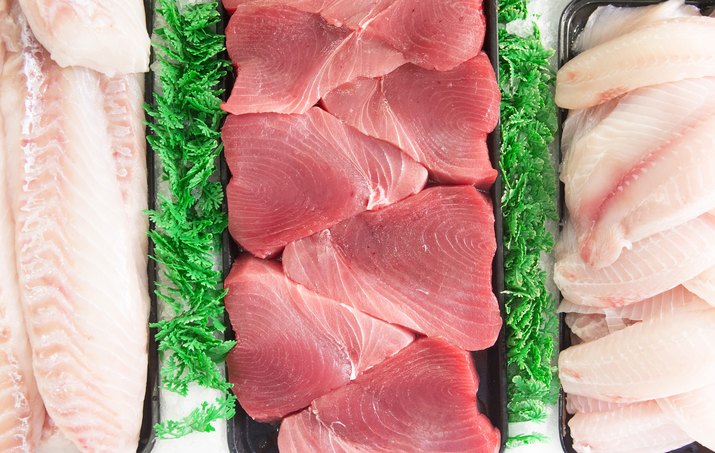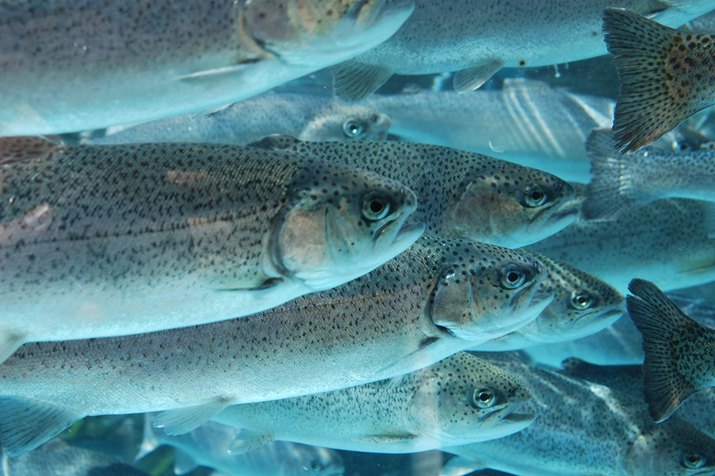
Overview
You've probably heard of bacteria in fish that can cause food poisoning within a couple of days of eating the contaminated seafood. But there are more reasons to be cautious about the fish you eat. Some can host nasty parasites that can also make you very sick by using you as their new living quarters, destroying tissue, diverting nutrients and leading to secondary infections. And while most of the time the effects are similar to food poisoning, some parasites can migrate to organs, where they wreak havoc.
The fish you catch in your local pond is the most likely source of these pests, but fish sold in American supermarkets can also contain visible parasites. "Processors are looking for evidence of parasites. Some even have machines that pull them out," says Christina Mireles DeWitt, the director of seafood research at the Oregon State University Seafood Research and Education Center. Those methods aren't always foolproof though. Here are three types of fish parasites you should know about and watch for, along with tips to ensure your catch is safe to eat.

1. Roundworms
Roundworm parasites live in the muscles and organs of marine fish like Atlantic salmon and sea trout, among other species. One of the most common types of parasites, anisakis, range from five to 20 millimeters in length and often appear as clear larvae coiled like a spring. Roundworms are found in fish from the U.S. and other spots worldwide, but especially in Japan, where cases of anisakiasis have been on the rise in recent years, according to the Japan Times.
"In Japan, experts use a technique called candling. They place a light under the fish to find parasites," says DeWitt. "But you can miss one. It's not foolproof." When fish containing anisakis is raw or undercooked, it can embed in your intestines and cause acute gastrointestinal disease, with symptoms including stomach pain, nausea and vomiting within a few minutes to several hours later. To avoid getting sick, be sure to remove the fish guts and freeze or cook fish well.
Up Next: This type of parasite is the most dangerous to ingest.

2. Flukes
Flukes are the most dangerous type of fish parasites, and there are several species of these organisms. While some simply cause abdominal discomfort and diarrhea, others can migrate to other organs, including your lungs, heart, central nervous system and liver, where they cause serious infections, complications and, at worst, death.
Most flukes are flat and clear; when they're big enough to see, they hardly ever make it to market. "The problem is when they're in the larval stage and they're so small you can't see them," says DeWitt. With that said, freezing and cooking kill the parasites, which makes fish safe to eat. If you recognize an infection early on, medicine can kill the flukes.
Up Next: This type of parasite can grow up to 10 meters long inside the human body.

3. Tapeworms
Found in cold climates in North America and Europe, "tapeworms can live and grow in us for a while before we notice there's a problem," says DeWitt. Broad tapeworms, the largest variety of tapeworms that infect humans, can grow up to 20 feet long. That's long enough to protrude from an infected person's anus! They live in the muscles of trout, salmon, pike, walleye, northern pike and sea bass, among other species, and are commonly ingested when they're larvae and too small to see with the naked eye. From there, they attach to the small intestine and grow and grow.
Most people don't have any symptoms of tapeworm infection at all, although they can eventually cause weight loss, B-12 deficiency, anemia, nausea, vomiting, weakness, dizziness, diarrhea and abdominal swelling. It's essential to cook fish because cold smoking, marinating and pickling may not be enough to kill the intruder. If you are infected, anti-parasite drugs will kill the parasite.
Up Next: This type of parasite is found on fish in local rivers and streams.

4. Freshwater Fish Parasites
Fish that is caught in local rivers and streams may also have visible signs of parasites. Lymphosarcoma, a parasite found in muskies, northern pike and other fish living in cooler water, looks like a cauliflower-shaped red tumor. Myofibrogranuloma, which infects walleye in Minnesota, Wisconsin and the Dakotas makes the flesh of the fish yellowish-brown with granular residues. According to the Minnesota Department of Natural Resources, if you happen to catch fish with these infections, dispose of the fish with household waste and never return them back to the water.
Up Next: These fish are the most susceptible to parasites.

The Most Susceptible Fish
While not all types of fish are susceptible to parasites, many of the most common ones we eat are, says DeWitt — including sea bass, cod, flounder, grouper, halibut, herring, mackerel, pollock, salmon, trout, snapper, sole and tuna, among others.
Parasites are usually found more in wild-caught fish because both call the ocean home. Fish farms can better control their environments to keep parasites out. With that said, not all fish in a particular species have parasites. "And even farmed fish can have parasites," says DeWitt. Add to that the fact that many aren't visible to the naked eye. It's essential to properly prep any fish you buy from the market and any you catch yourself every time.
Up Next: This is the best way to cook fish to prevent an infection.

How to Kill Parasites
The good news is that fish with parasites are perfectly edible if you take the proper precautions. To kill parasites, cook or hot smoke fish to around 140 degrees Fahrenheit (the specific temperature depends on what type of fish it is) until the fish easily flakes with a fork. This also kills bacteria like listeria. "These are like little animals living on other animals. They don't survive [at that temperature]," says DeWitt. You can also freeze fish at negative four degrees Fahrenheit for seven days to kill parasites, although that won't kill most bacteria. DeWitt adds that most commercial home fridges don't get that cold, so you're probably safest leaving fish in the freezer for at least two weeks to ensure you've killed off all parasites.
Otherwise brining, pickling and soaking fish in lime juice à la ceviche can reduce, but not eliminate, parasites. Physically removing visible parasites and trimming away belly flaps also reduces the risk, but doesn't bring it to zero.
Up Next: This is how worried you should be about sushi.

What About Sushi?
Sushi and ceviche fans rejoice: raw restaurant fish should be safe, at least from parasites. In the past, inspectors pulled and tested fish samples at random for parasites and other illness-causing infections, but that can leave a lot of room for error. So since 1997 (which also happens to be around the time the sushi trend exploded in the U.S.), the FDA decided to eliminate the hazard at its source: All fish that's intended to be sold raw in the U.S. must be frozen first to kill parasites, says DeWitt. That goes for all American as well as imported products, which also have to undergo the same strict processing as fish caught in the United States.
Read more: Opioids Are Ending Up in Our Seafood — Here's What You Can Do About It

What Do YOU Think?
How do you cook your fish? Are you ever worried about parasites? Have you ever had a parasite? Let us know in the comments below!
Video of the Day
Video of the Day